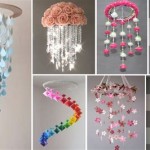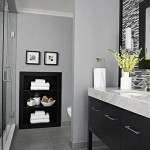Youth Ministry Decorating Ideas: Creating Engaging and Functional Spaces
Youth ministry spaces play a crucial role in fostering spiritual growth, community building, and a sense of belonging among young people. The physical environment can significantly impact the effectiveness of a youth program. A thoughtfully designed and decorated space can attract and retain youth, encouraging participation and creating a positive atmosphere conducive to learning and connection. This article explores various decorating ideas for youth ministry spaces, focusing on creating environments that are both visually appealing and functionally efficient.
The primary goal of any youth ministry space is to serve the needs of the youth it aims to reach. Before embarking on any decorating project, a thorough assessment of the current space and the needs of the youth is essential. This includes considering the age range of the youth, the types of activities that will take place in the space, and the overall goals of the youth ministry program. Input from the youth themselves is invaluable during this planning phase. Conducting surveys, focus groups, or informal conversations can provide valuable insights into their preferences and needs, ensuring the resulting space is one they feel comfortable and connected to.
Budgetary constraints often play a significant role in decorating projects. Therefore, it's crucial to establish a realistic budget and prioritize spending accordingly. Exploring cost-effective options such as repurposing existing furniture, utilizing volunteer labor, and sourcing discounted materials can help maximize resources and achieve the desired aesthetic without overspending. Creative use of DIY projects and thrifting can also add unique character to the space while staying within budget.
Creating a Welcoming and Inclusive Atmosphere
A welcoming and inclusive atmosphere is paramount for youth ministry spaces. The design should communicate openness, acceptance, and a sense of belonging to all who enter. This can be achieved through various design elements that foster a positive and comfortable environment.
Color psychology plays a significant role in shaping the mood and atmosphere of a space. Warm colors like yellows, oranges, and reds can create a sense of energy and excitement, while cooler colors like blues, greens, and purples can promote relaxation and tranquility. A balanced color palette that incorporates both warm and cool tones can create a versatile space suitable for a variety of activities. Consider incorporating the youth ministry's branding colors into the design to reinforce its identity and create a cohesive look.
Lighting significantly impacts the ambiance of a space. Natural light is ideal, but if it is limited, supplementing with artificial lighting is crucial. Different types of lighting can be used to create different effects. Ambient lighting provides overall illumination, while task lighting focuses on specific areas for activities like reading or studying. Accent lighting can highlight architectural features or artwork, adding visual interest to the space. Dimmable lights can offer flexibility, allowing for adjustment to suit different activities and moods.
Incorporating comfortable and flexible seating arrangements is essential for creating a welcoming space. A mix of seating options, such as sofas, chairs, beanbags, and floor cushions, can cater to different preferences and activities. Modular furniture can be easily rearranged to accommodate various group sizes and activities. Providing ample seating space encourages interaction and fellowship among the youth.
Personalization can make the space feel more welcoming and inclusive. Displaying artwork created by the youth, photos of past events, and inspirational quotes can create a sense of ownership and belonging. Encouraging youth to contribute to the decoration process can further enhance this feeling of connection with the space.
Designing Functional and Versatile Spaces
Youth ministry spaces often need to serve multiple purposes, requiring a design that is both functional and versatile. A well-designed space can adapt to various activities, ensuring optimal utilization and maximizing its value to the youth ministry program.
Zoning the space into distinct areas for different activities can improve functionality and organization. For example, creating a designated area for small group discussions, a separate area for games and recreation, and a quiet area for study and reflection can cater to diverse needs. Clearly defining these zones through furniture arrangement, visual cues, and subtle changes in decor can enhance the overall usability of the space.
Storage solutions are crucial for maintaining an organized and clutter-free space. Ample storage space can help keep supplies, equipment, and personal belongings neatly organized, preventing distractions and promoting a more conducive learning environment. Shelving units, cabinets, and storage bins can be used to maximize storage capacity. Utilizing vertical space with wall-mounted shelves or storage units can be particularly effective in smaller spaces.
Technology integration is increasingly important in youth ministry. Providing accessible outlets, charging stations, and Wi-Fi access can cater to the digital needs of today's youth. Incorporating technology into the design, such as projector screens, sound systems, and interactive whiteboards, can enhance learning and engagement during presentations and activities.
Flexibility is key when designing a multipurpose space. Furniture that can be easily moved, rearranged, or folded away can provide maximum flexibility. Collapsible tables, stackable chairs, and modular furniture can allow the space to be quickly adapted to different activities and group sizes. This adaptability ensures the space remains functional and relevant to the evolving needs of the youth ministry program.
Incorporating Youth Input and Creating a Sense of Ownership
Engaging youth in the decorating process is essential for creating a space that resonates with them and fosters a sense of ownership. Involving youth in the decision-making process can also empower them and increase their engagement with the youth ministry program.
Gathering input from the youth through surveys, focus groups, and brainstorming sessions can provide valuable insights into their preferences and needs. Asking open-ended questions about their ideal youth ministry space can elicit creative ideas and suggestions. Actively listening to their input and incorporating their ideas into the design can demonstrate that their voices are valued and respected.
Collaborative projects can encourage youth participation and creativity. For example, involving them in painting murals, creating artwork, or building furniture can foster a sense of ownership and pride in the space. These collaborative projects can also provide opportunities for mentorship and skill-building, further enhancing their engagement with the youth ministry program.
Creating leadership opportunities within the decorating project can empower youth and develop their leadership skills. Appointing youth leaders to oversee specific aspects of the project, such as color selection, furniture arrangement, or artwork creation, can provide them with valuable experience and responsibility. This involvement enhances their sense of ownership and investment in the space.
Regularly seeking feedback from the youth after the decorating project is completed can ensure the space continues to meet their needs and preferences. Conducting surveys, hosting feedback sessions, or simply observing how they interact with the space can provide valuable insights for future improvements. This ongoing feedback loop ensures the space remains relevant and engaging for the youth.
By prioritizing a welcoming atmosphere, functional design, and youth involvement, youth ministry spaces can be transformed into vibrant and engaging environments that foster spiritual growth, community building, and a sense of belonging for young people.

99 Youth Room Decor Ideas S

99 Youth Room Decor Ideas S

Pin On Z Alc Fun Design Ideas


99 Youth Room Decor Ideas S


4 Design Ideas To Increase Your Impact On Young Members Church Executive

Pin On Ministry Ideas

48 Ideas To Redesign Your Youth Room

Pin On Kidmin







